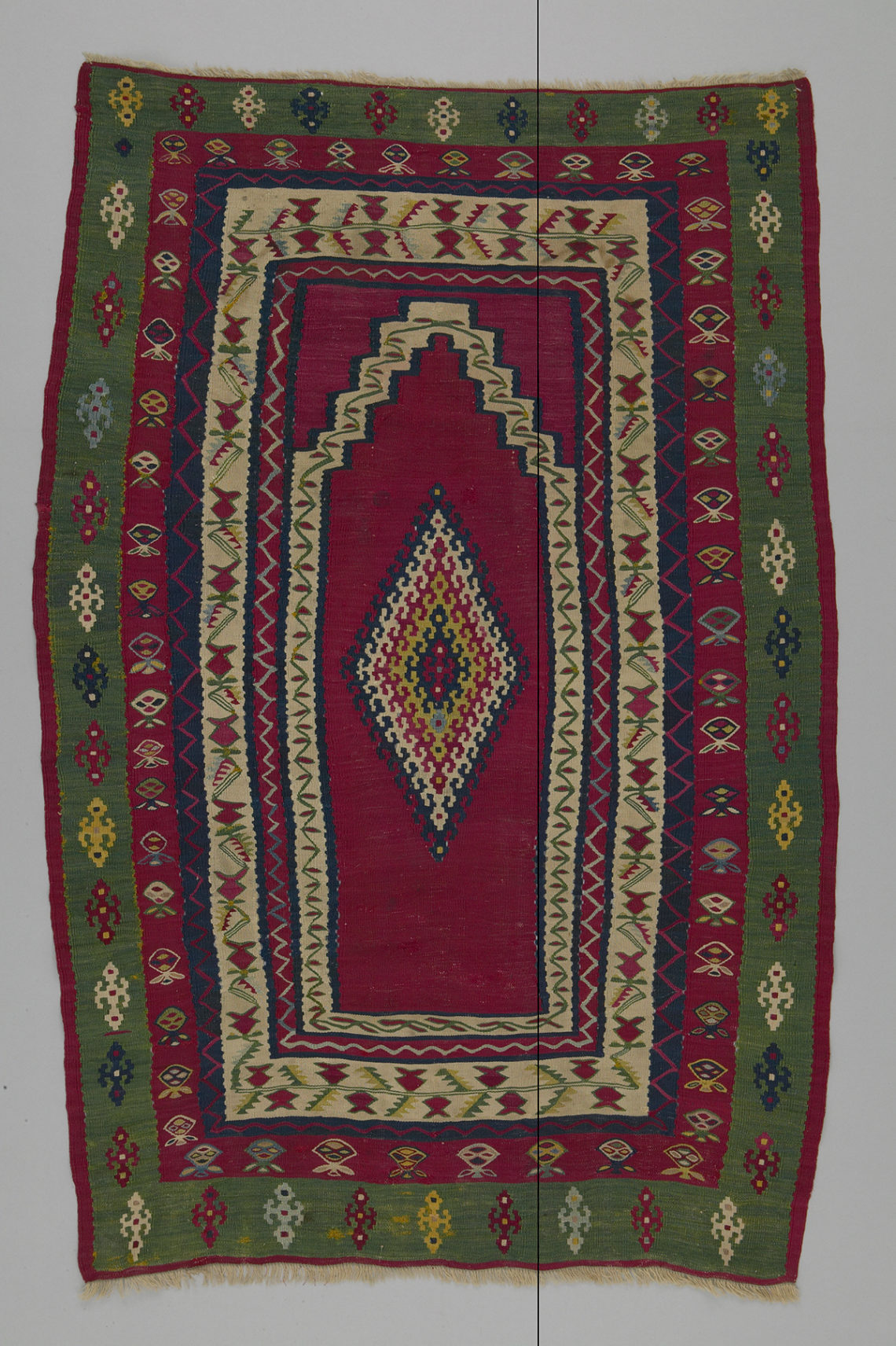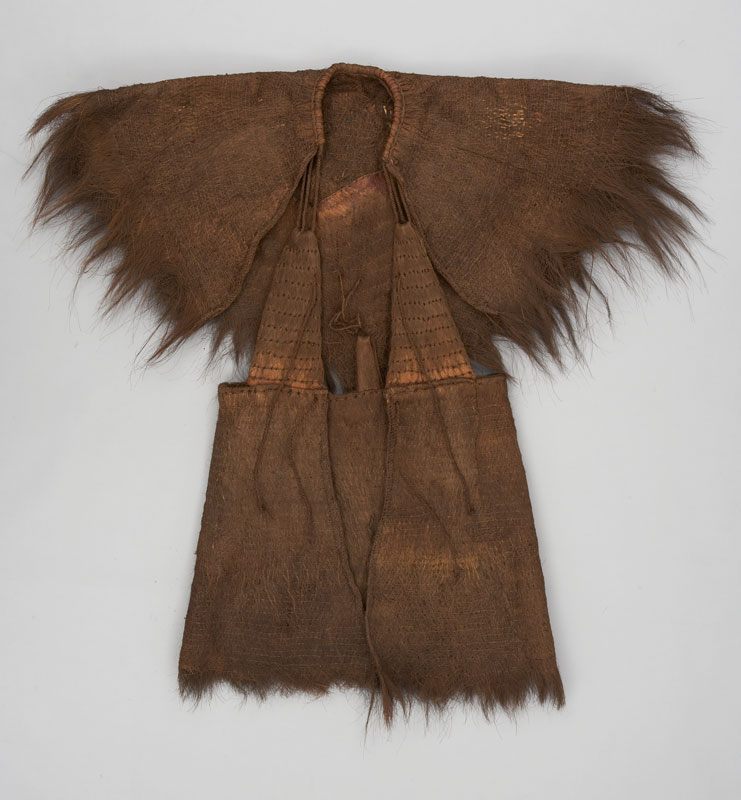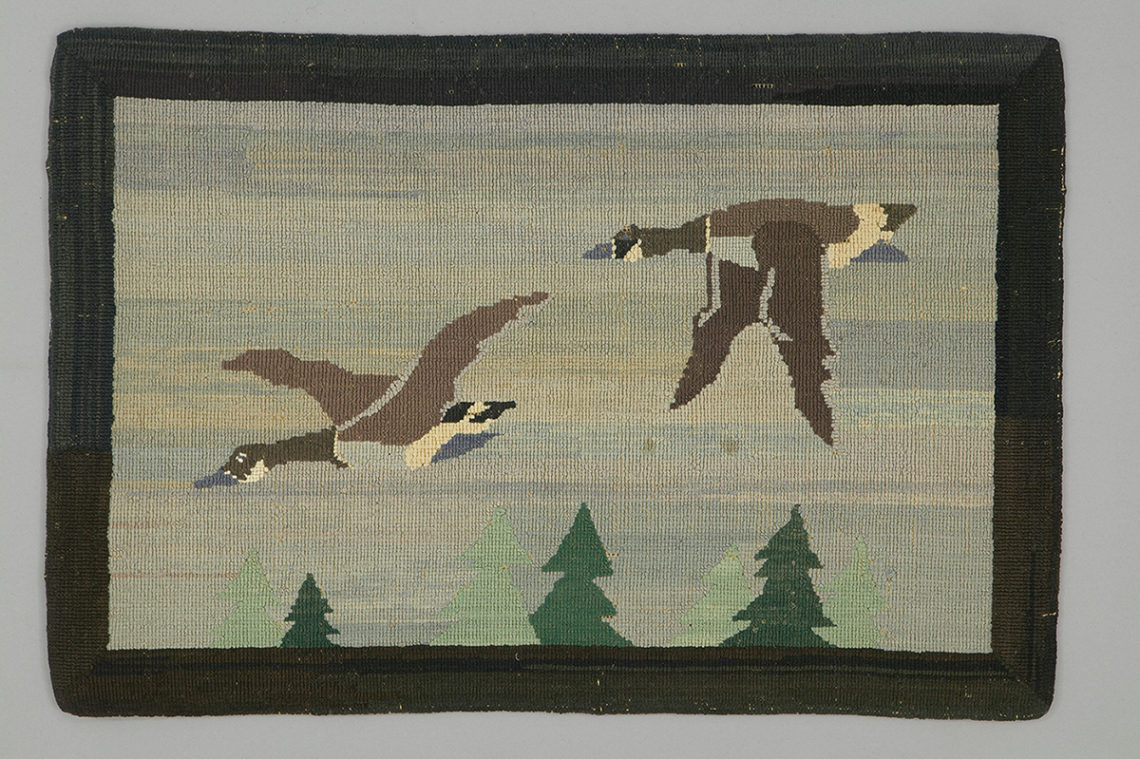Salt Bag, T03.1.2
Our object this week is a salt bag from Balochistan.
Salt bags were used by tribal nomads to carry rock salt and by shepherds to carry salt as a food supplement for their sheep and goats. Despite the name, the bags are also used to hold fruit and nuts. They are shaped like a geometrical bottle with a large body and narrow mouth to prevent salt from spilling out. This one is quite small, measuring 33 x 21cm. A plaited cord is often attached to a top corner which allows the bag to be hung in a tent for easy access while cooking. Salt bags usually have the same design on both sides and are often decorated with tassels, as seen here. All known weaving techniques are used to produce these bags including plain weave, knotted pile, interlocking and slit tapestry, supplementary weft and weft float.
This Balochi salt bag was made between 1930 and 1950 in the Balochistan region which extends from Afghanistan into Iran and Pakistan. Salt bags are only made in a small area of the world and, as a result, they look very much alike despite the ethnic diversity of the nomads who made them. Textiles of Baluchistan by M.G. Konieczny (1979) is a good resource if you’re interested to know more.


